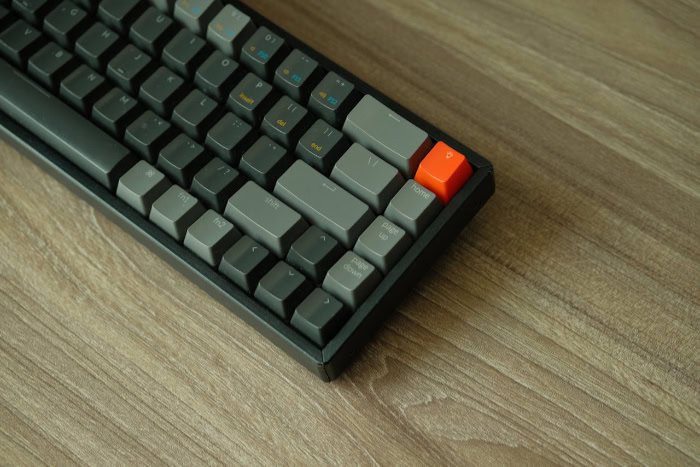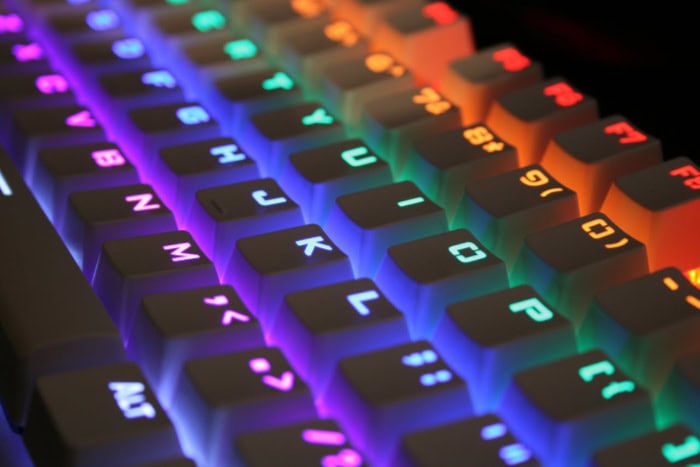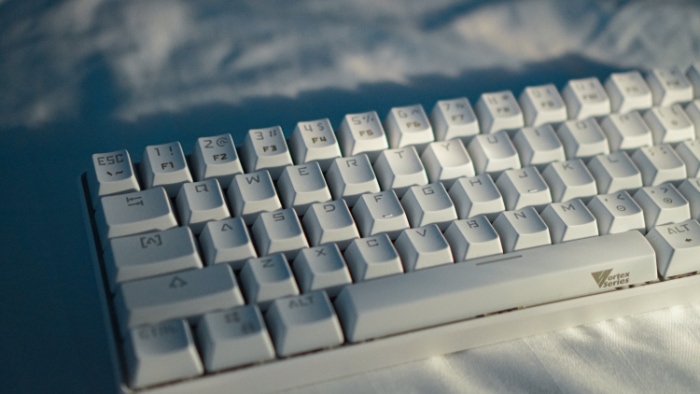Mechanical vs. Membrane Keyboards: Pros, Cons, and Choices

Not all keyboards are created equal, and the type you choose can have a significant impact on your daily tasks. For gamers, office workers, and casual users alike, the debate between mechanical and membrane keyboards often comes down to personal preference, performance, and practicality.
Mechanical keyboards boast precision and durability, while membrane keyboards offer simplicity and affordability. Each has its strengths and trade-offs, catering to specific needs and budgets.
Key Mechanisms and How They Work
Keyboards may look similar on the surface, but the way they register a keystroke can differ dramatically, depending on their underlying mechanism. Mechanical and membrane keyboards use entirely different technologies to achieve the same purpose: translating your keypresses into digital input.
The differences in their construction not only affect how they feel during use but also influence their performance, durability, and overall user experience.
Mechanical Keyboards
Mechanical keyboards use individual switches beneath each key, making them a favorite among those who prioritize precision and tactile feedback. These switches are made up of several components, including a housing, a spring, and a stem.
When a key is pressed, the stem moves downward, compressing the spring and completing an electrical circuit that registers the input. This design provides a consistent and reliable response that many users find satisfying.
One of the standout features of mechanical keyboards is the variety of switch types available. Common categories include:
- Tactile switches: These provide a noticeable bump when the actuation point (the point at which the keypress is registered) is reached. This feedback lets users know their input has been recognized without needing to bottom out the key entirely, making them ideal for fast typists who rely on precision.
- Linear switches: Linear switches offer a smooth, uninterrupted keystroke with no tactile bump. They are often preferred by gamers who require quick, fluid movements without distractions.
- Clicky switches: These are similar to tactile switches but add an audible “click” sound at the actuation point. While the sound can be satisfying for some, it may not be suitable for shared workspaces due to the noise.
The modular nature of mechanical switches also means users can choose a switch type that aligns with their preferences, further enhancing the typing or gaming experience.
Membrane Keyboards
Membrane keyboards, on the other hand, utilize a completely different mechanism. These keyboards rely on a flexible, rubber or silicone membrane that sits beneath the keys.
When a key is pressed, the pressure forces the membrane into contact with a circuit layer underneath, completing the circuit and registering the input. This design is simpler and more compact compared to mechanical keyboards, which is why membrane keyboards are often lighter and slimmer.
Due to the way membrane keyboards are constructed, the keys generally feel softer and require less force to press. However, the lack of distinct tactile feedback can make typing feel less responsive.
Additionally, the actuation point is less defined, meaning users may need to press the keys all the way down (bottom out) to ensure their input is recorded.
The simplicity of the membrane structure makes it cost-effective to produce, which is why these keyboards are often more affordable. However, this design also has limitations.
Repeated use can wear out the rubber or silicone membrane over time, leading to a less consistent typing experience.
Typing Experience and Performance

The way a keyboard feels and performs during use is a crucial factor for many users. Typing experience goes beyond just personal preference; it can directly affect comfort, speed, and accuracy.
Mechanical and membrane keyboards provide distinctly different sensations, primarily due to their construction and the way they register keystrokes.
Tactile Feedback and Key Travel
One of the most noticeable differences between mechanical and membrane keyboards lies in tactile feedback. Mechanical keyboards are designed to offer a defined response when a key is pressed.
Depending on the type of switch used, this feedback can range from a subtle bump to a pronounced click. This tactile sensation helps users feel exactly when a keypress is registered, reducing the likelihood of missed inputs or unnecessary force.
The result is a precise and satisfying typing experience that appeals to those who type frequently or play games that demand accuracy.
In contrast, membrane keyboards have a much softer feel due to their rubber or silicone construction. Pressing a key typically lacks that distinct tactile bump, which can make typing feel less responsive.
Additionally, the actuation point on a membrane keyboard is less defined, requiring users to fully press the key (bottom out) to ensure the input is recognized.
While this may not be an issue for casual users, those who type for extended periods might find it less efficient.
Key travel, or the distance a key moves when pressed, also differs between the two. Mechanical keyboards often have longer key travel, which provides a more deliberate and controlled typing motion.
This can enhance accuracy but may take some time to get used to for those accustomed to the shorter travel of membrane keyboards.
On the other hand, the shorter key travel of membrane keyboards can feel quicker and lighter, making them preferable for users who prioritize ease over feedback.
Noise Levels
Another aspect that sets mechanical and membrane keyboards apart is the level of noise they produce. Mechanical keyboards, particularly those with clicky switches, are well-known for their audible feedback.
Each press produces a distinct clicking sound that many users find satisfying, as it reinforces the tactile response. However, this noise can become a drawback in certain environments.
For example, shared offices, libraries, or late-night gaming sessions might not be the best places for a loud keyboard.
Membrane keyboards, on the other hand, are much quieter. The rubber or silicone membrane absorbs much of the sound, resulting in a softer and more subdued typing experience.
This makes them a better choice for users who need a quiet workspace or prefer a more discreet keyboard. While they lack the satisfying “click” of a mechanical keyboard, their quieter operation can be a significant advantage in noise-sensitive settings.
Typing Fatigue
Typing fatigue is an important consideration, especially for those who spend hours working or gaming. Mechanical keyboards excel in this area due to their ergonomic design and tactile feedback.
The defined actuation point means users don’t have to bottom out each key, reducing the effort required for continuous typing. This can be particularly beneficial for preventing strain during long sessions.
Additionally, the varied switch options allow users to select one that suits their typing style, further enhancing comfort.
Membrane keyboards, while softer to press, often lack the responsiveness needed to minimize typing fatigue. The need to bottom out each key can lead to increased strain over time.
However, their lightweight design and shorter key travel can still make them comfortable for casual or occasional use. Some users may also appreciate the softer feel of membrane keyboards, especially if they prefer a gentler typing motion.
Durability and Lifespan

The durability of a keyboard is a crucial factor for many users, especially for those who type intensively or game regularly. A keyboard’s construction and the materials used directly influence how well it withstands regular wear-and-tear.
Mechanical and membrane keyboards differ significantly in this area, with each offering distinct benefits and trade-offs in terms of lifespan and resilience.
Mechanical Keyboards
Mechanical keyboards are widely recognized for their exceptional durability. Each key features a mechanical switch that is individually engineered to last through tens of millions of keystrokes.
Depending on the switch manufacturer, this number can range anywhere from 50 million to 100 million presses per key.
This longevity makes mechanical keyboards a reliable choice for heavy users, such as professional typists and gamers, who demand consistent performance over extended periods.
The robust construction of mechanical keyboards further enhances their durability. High-quality materials, such as metal backplates and durable plastics, ensure that the keyboard remains sturdy even with frequent use.
The individual components of mechanical switches are less prone to degradation compared to the rubber membranes used in other designs.
Additionally, if a single switch fails, it can often be replaced without needing to discard the entire keyboard, further extending its lifespan.
This durability does come with a trade-off, as mechanical keyboards are typically heavier and bulkier than their membrane counterparts. However, for those who prioritize long-term reliability and performance, the investment is often worth it.
Membrane Keyboards
Membrane keyboards, while affordable and lightweight, tend to have a shorter lifespan compared to mechanical keyboards. The rubber or silicone membrane layer that registers keystrokes is more susceptible to wear over time.
With repeated use, the membrane can lose its elasticity, leading to inconsistencies in how keys respond. Pressure pads beneath the keys may also degrade, making inputs less accurate or requiring more force to register.
On average, membrane keyboards are designed to handle far fewer keystrokes—often in the range of 5 to 10 million per key. This makes them better suited for light or occasional use, such as basic office tasks or casual web browsing.
For users who don’t rely on their keyboards for intensive or prolonged sessions, the lifespan of a membrane keyboard may still be sufficient.
The simpler construction of membrane keyboards makes them more compact and portable, but this comes at the cost of durability.
Once the membrane wears out, repairing or replacing individual components is generally not possible, which means the entire keyboard will need to be replaced.
While this may not be an issue for users who prefer budget-friendly options, it’s an important consideration for those who need a keyboard that can stand up to heavy use.
Customization and Design Options

For many users, a keyboard is more than just a functional tool—it’s an extension of their personal style and preferences. The ability to customize not only enhances the experience but also allows users to tailor their keyboard to specific needs, from aesthetics to practical performance.
Mechanical and membrane keyboards differ significantly in the range of customization and design options they offer, with mechanical keyboards leading the way in flexibility.
Mechanical Keyboards
One of the strongest advantages of mechanical keyboards is their unparalleled level of customization. These keyboards are designed with enthusiasts and professionals in mind, offering a variety of features that can be tailored to suit individual tastes and requirements.
For instance, users can replace keycaps with different materials, colors, or designs to create a unique look or improve functionality.
Keycap sets made from durable materials like PBT plastic are popular among those who want a premium feel and long-lasting quality.
Programmable keys are another standout feature of mechanical keyboards. Many models allow users to assign custom macros or functions to specific keys, which can be invaluable for gamers, video editors, and software developers who rely on repetitive commands.
This level of programmability can significantly enhance productivity and efficiency.
RGB lighting is another feature that has gained immense popularity, particularly among gamers. Mechanical keyboards often come with fully customizable lighting options, allowing users to choose from millions of colors and effects.
From subtle underglows to dynamic wave patterns, RGB lighting not only enhances the visual appeal of a setup but can also serve practical purposes, such as highlighting commonly used keys.
Switch options further enhance the customization potential of mechanical keyboards. Since the switches beneath the keys are often modular, users can choose the type of switch that best suits their typing style or gaming preferences.
Some advanced models even allow for hot-swappable switches, making it possible to mix and match different types on the same keyboard. This level of control makes mechanical keyboards highly appealing to users who demand precision and personalization.
Membrane Keyboards
Membrane keyboards, while practical and affordable, tend to offer limited customization options. Their design prioritizes simplicity and portability, which often leaves little room for extensive personalization.
The fixed membrane mechanism means that features like replaceable switches or keycaps are not feasible. This lack of modularity makes membrane keyboards less appealing to users who enjoy tweaking their hardware.
However, membrane keyboards do have their strengths in terms of design. Many models are sleek, lightweight, and compact, making them ideal for users who value portability and minimalism.
The streamlined design is particularly useful for those who need a keyboard for occasional use or prefer a clean and simple aesthetic.
Some membrane keyboards include basic backlighting, which can range from single-color illumination to simple multi-zone RGB lighting.
While not as advanced as the lighting options found in mechanical keyboards, these features can still add a touch of flair to the overall design.
Additionally, the affordability of membrane keyboards makes them a practical choice for users who want decent aesthetics without the higher price tag of mechanical models.
Cost and Value for Money

The cost of a keyboard is often one of the first factors people consider when making a purchase. Mechanical and membrane keyboards differ significantly in price, but the value they offer depends on how they’re used and what features are most important to the user.
While mechanical keyboards are typically associated with higher upfront costs, their durability and customization options can make them a worthwhile investment.
Membrane keyboards, on the other hand, provide a budget-friendly alternative, particularly for users with lighter needs.
Price Differences
Mechanical keyboards generally come with a higher price tag compared to membrane keyboards. This is largely due to their intricate construction, which includes individual switches for each key.
The materials used in mechanical keyboards, such as durable plastics, metal backplates, and high-quality keycaps, also contribute to their cost. Additional features like RGB lighting, programmable keys, and hot-swappable switches can further increase the price.
For gamers, professionals, and enthusiasts who value performance and longevity, however, the expense is often justified.
In contrast, membrane keyboards are far more affordable. Their simpler design, which relies on a single membrane layer to register keypresses, reduces manufacturing costs.
This affordability makes them a popular choice for users who need a basic keyboard for occasional tasks or light office work.
While membrane keyboards may lack the advanced features of their mechanical counterparts, they offer a practical solution for those on a tight budget.
Long-Term Investment
When evaluating value for money, it’s important to consider not just the initial cost but also the long-term benefits. Mechanical keyboards, while more expensive upfront, are built to last.
The switches are rated for tens of millions of keystrokes, and their modular design allows for easy repairs or upgrades.
For users who type frequently or game intensively, a mechanical keyboard can remain reliable for years, potentially saving money in the long run by reducing the need for replacements.
Membrane keyboards, on the other hand, have a shorter lifespan due to the wear and tear of their rubber or silicone membranes. Over time, the typing experience may degrade, and inputs may become less accurate.
While their lower cost makes replacing them more affordable, frequent replacements could add up for heavy users. For casual users or those with light typing needs, however, this may not be a concern, as a membrane keyboard can often last long enough to justify its lower price.
Budget-Friendly Alternatives
For users who want a balance between cost and quality, there are high-quality membrane keyboards that offer excellent value.
These models may include features like basic backlighting, ergonomic designs, and comfortable key layouts, making them suitable for a variety of tasks without breaking the bank.
While they lack the advanced customization and durability of mechanical keyboards, they can still provide a satisfying experience for casual users.
On the mechanical side, there are also budget-friendly options available. Some entry-level mechanical keyboards offer solid performance and durability without the extra features found in premium models.
These can be a great starting point for users who want to experience the benefits of mechanical switches without committing to a high price tag.
Conclusion
Mechanical and membrane keyboards each bring their own strengths and limitations to the table, catering to different preferences, needs, and budgets.
Mechanical keyboards excel in durability, tactile feedback, customization, and long-term value, making them a standout choice for gamers, professionals, and enthusiasts who demand precision and reliability.
On the other hand, membrane keyboards offer a quieter, lightweight, and cost-effective solution, ideal for casual users or those prioritizing portability and simplicity.
Factors like typing feel, noise levels, lifespan, design flexibility, and cost should all be considered to ensure the keyboard aligns with how it will be used.
Both types have their place and can serve their respective audiences well—whether it’s for high-performance gaming, prolonged typing sessions, or everyday tasks.


